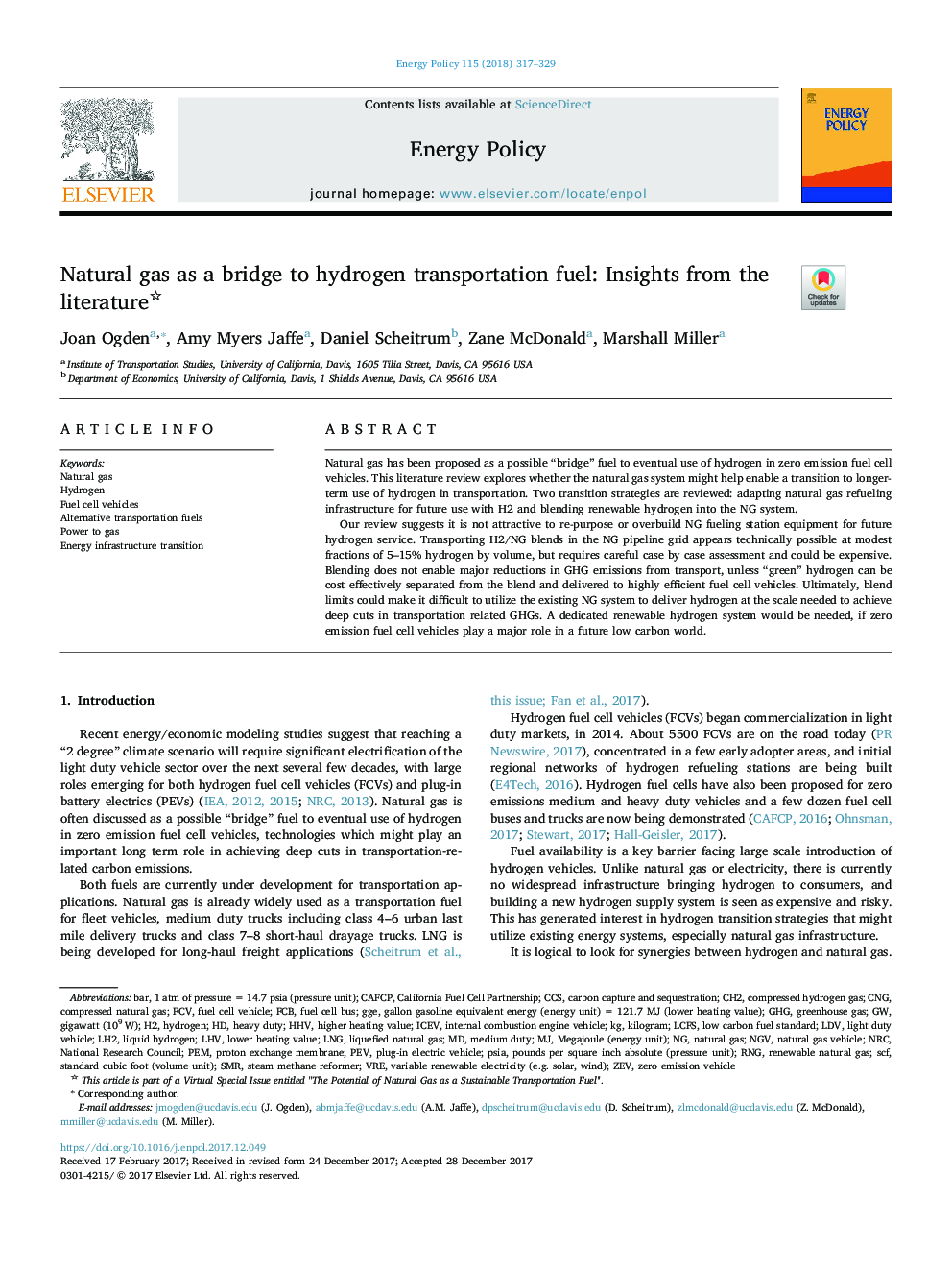| Article ID | Journal | Published Year | Pages | File Type |
|---|---|---|---|---|
| 7397364 | Energy Policy | 2018 | 13 Pages |
Abstract
Our review suggests it is not attractive to re-purpose or overbuild NG fueling station equipment for future hydrogen service. Transporting H2/NG blends in the NG pipeline grid appears technically possible at modest fractions of 5-15% hydrogen by volume, but requires careful case by case assessment and could be expensive. Blending does not enable major reductions in GHG emissions from transport, unless “green” hydrogen can be cost effectively separated from the blend and delivered to highly efficient fuel cell vehicles. Ultimately, blend limits could make it difficult to utilize the existing NG system to deliver hydrogen at the scale needed to achieve deep cuts in transportation related GHGs. A dedicated renewable hydrogen system would be needed, if zero emission fuel cell vehicles play a major role in a future low carbon world.
Keywords
CH2FCVNGVGGESMRVRESCFHHVPEVCCSLDVFCBPSIALH2ICEVZEVLCFSCNGLNGGHGLHVRNGPEMNRCFuel cell buslower heating valueLow carbon fuel standardBARPower to GasPlug-in electric vehicleInternal Combustion Engine VehicleNatural gas vehicleNational Research CouncilProton exchange membraneHydrogenliquid hydrogenFuel Cell VehiclesZero emission vehicleLight duty vehiclefuel cell vehicleheavy dutycarbon capture and sequestrationkilogramNatural gascompressed natural gasRenewable natural gasLiquefied natural gasGreenhouse gasHigher heating value
Related Topics
Physical Sciences and Engineering
Energy
Energy Engineering and Power Technology
Authors
Joan Ogden, Amy Myers Jaffe, Daniel Scheitrum, Zane McDonald, Marshall Miller,
